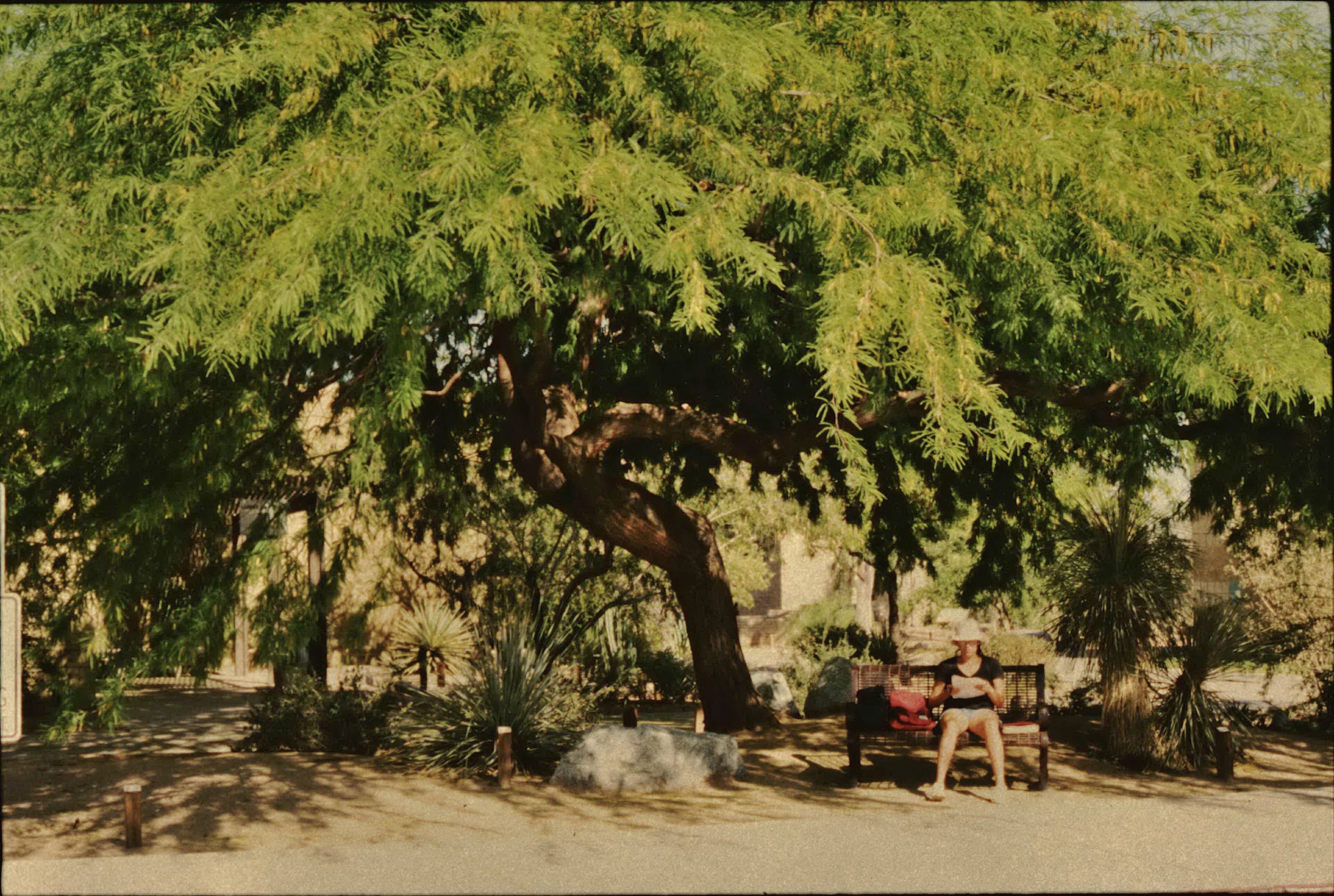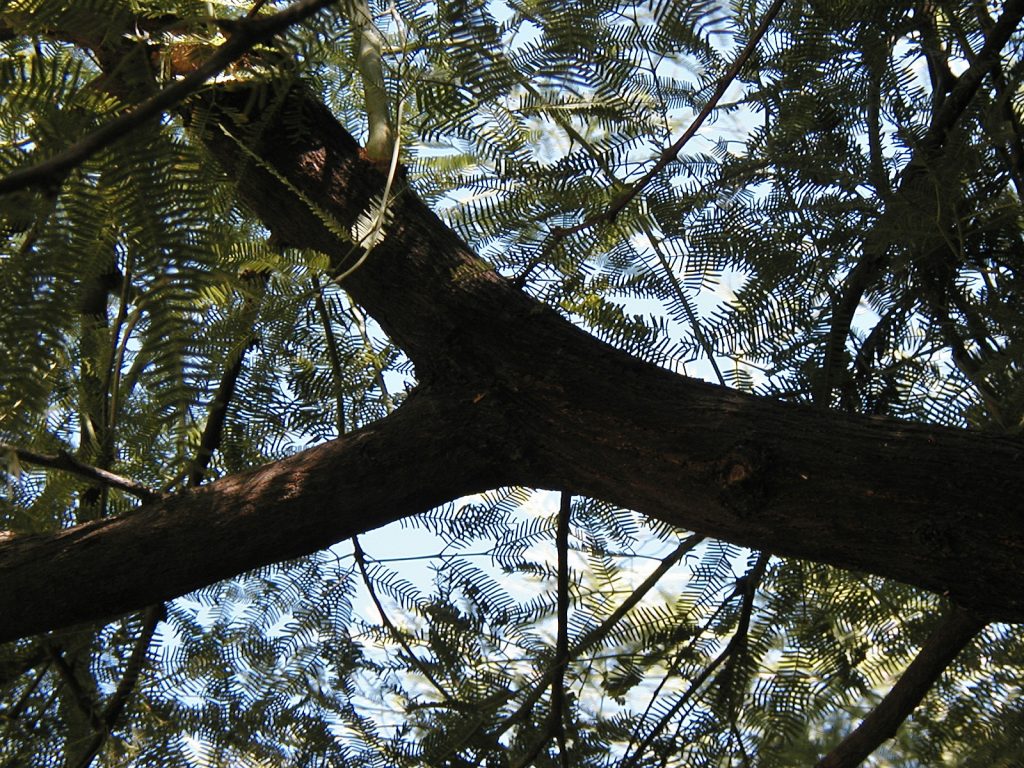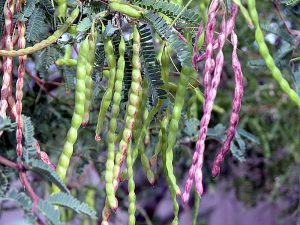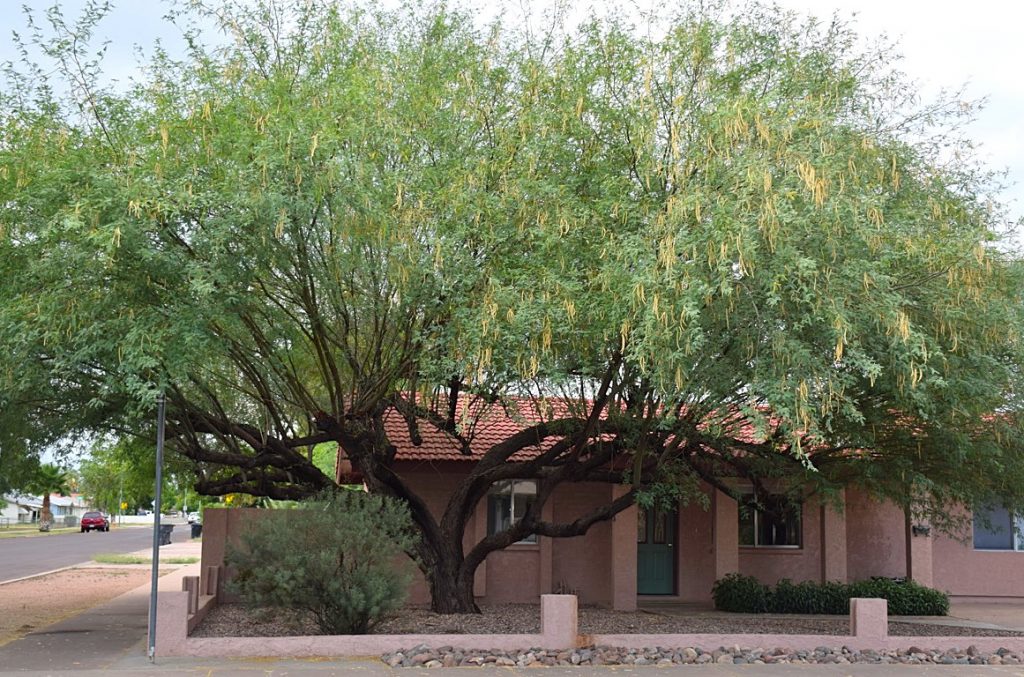Prosopis, commonly known as mesquites, are extremely adaptable and tolerant to a wide range of growing conditions. They adjust to little or abundant water and will survive during times of drought by slowing down their growth. Mesquites have supplied shade, food, and medicine for people of the desert for ages. Because every part of the tree is useful, it is often referred to as the “Tree of Life.”
Mesquites have moderate to dark green leaves, rough, dark bark, and a nice sculptural growth habit. They produce yellowish cream colored catkin flowers in the spring, followed by seed pods varying in shape and size. Depending upon the variety, the canopy spreads to a mature width between 20 and 35 feet with an equal height. Mesquites must be encouraged to develop extensive roots in order to maintain stability. This is done by watering judiciously along the perimeter of the canopy and not at the base of the trunk.
A ll mesquites blend in well with a garden or natural landscape. Mesquites are most attractive when grown as a multi-trunk tree. Once a mesquite has grown to the desired size, reduce the irrigation to slow future growth. Most mesquites have thorns on immature growth, but thorn production will decrease as the tree matures and growth slows. However, many local nurseries have selected and sell thornless cultivars of both Argentine and Chilean mesquites.
ll mesquites blend in well with a garden or natural landscape. Mesquites are most attractive when grown as a multi-trunk tree. Once a mesquite has grown to the desired size, reduce the irrigation to slow future growth. Most mesquites have thorns on immature growth, but thorn production will decrease as the tree matures and growth slows. However, many local nurseries have selected and sell thornless cultivars of both Argentine and Chilean mesquites.
While the Arizona Mesquite is deciduous and loses its leaves in winter, the South American Mesquites will generally not drop their leaves until the first flush of new growth in late March or early April. Mesquites cross-pollinate quite readily and as a result, much of what you find in the nursery might just be called Hybrid or South American Hybrid Mesquites.
Prosopis alba, Argentine Mesquite
Argentine mesquite is the most vigorous of the mesquite varieties. It has very large white thorns, and a rough, dark vertical trunk. These mesquites are nearly evergreen, but will continue to drop leaves throughout the cool season months. Argentine mesquites need good drainage, look best with monthly deep watering, and minimal to no fertilization.
 Prosopis chilensis, Chilean Mesquite
Prosopis chilensis, Chilean Mesquite
Chilean mesquite is the species most often used in the landscape. A form is available without thorns or with very small thorns. This vigorous tree has a wide spreading crown, deep green leaves, and is deciduous. Care is similar to Argentine mesquite.
Prosopis velutina, Arizona or Velvet Mesquite
 Arizona mesquite, or velvet mesquite, is native to the Arizona desert. This mesquite has soft, velvety leaves that are gray-green in color. It has small thorns at the leaf bases, and while young branches are greenish in color, mature bark is fissured and dark brown. These mesquites are useful as a specimen tree in the desert landscape, or informally in naturalized areas. They will survive on rainfall, but like monthly deep watering during the summer. This mesquite attracts a greater diversity of wildlife.
Arizona mesquite, or velvet mesquite, is native to the Arizona desert. This mesquite has soft, velvety leaves that are gray-green in color. It has small thorns at the leaf bases, and while young branches are greenish in color, mature bark is fissured and dark brown. These mesquites are useful as a specimen tree in the desert landscape, or informally in naturalized areas. They will survive on rainfall, but like monthly deep watering during the summer. This mesquite attracts a greater diversity of wildlife.
Learn more about mesquites, including the unique Screwbean mesquite, in this University of Arizona publication, Mesquite and Palo Verde Trees for the Urban Landscape.
This feature is based on a concept and text originally developed jointly by the Arizona Nursery Association and the Arizona Municipal Water Users Association (AMWUA) with partial funding from the Arizona Department of Water Resources.


